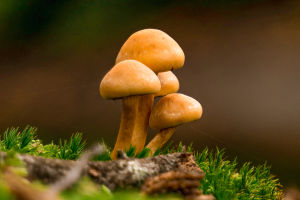The Guiana chestnut (Pachira aquatica), also known as the money tree or Malabar chestnut, is a tropical wetland tree native to Central and South America.
Revered not only for its unique aesthetic appeal and decorative value, the Guiana chestnut is also known for various effects and benefits that contribute to its popularity as both an indoor and outdoor plant.
Let's delve into the multiple facets of the Guiana chestnut, exploring its effects on health, the environment, and its symbolic significance.
1. Health Benefits
Air Purification: One of the primary reasons the Guiana chestnut is a favored houseplant is its ability to purify indoor air. According to NASA’s Clean Air Study, plants like the Guiana chestnut can remove toxins such as formaldehyde, benzene, and trichloroethylene from the air, improving overall air quality. This can lead to better respiratory health and reduced allergic reactions.
Stress Reduction: The presence of greenery, including the Guiana chestnut, has been linked to lower stress levels. Studies suggest that spending time around plants can reduce cortisol levels, leading to decreased stress and anxiety. The Guiana chestnut’s lush, vibrant foliage can create a calming environment, making it a perfect addition to offices and homes.
Increased Humidity: As a tropical plant, the Guiana chestnut releases moisture into the air through a process called transpiration. Increased humidity can alleviate symptoms of dry skin, sore throats, and respiratory discomfort, particularly in arid or artificially heated environments.
2. Environmental Impact
Biodiversity: The Guiana chestnut plays a significant role in its natural habitat by supporting local biodiversity. It provides food and shelter for various insects, birds, and other wildlife. When cultivated in gardens or landscapes, it can attract beneficial insects and contribute to the ecological balance.
Erosion Control: In its native environment, the Guiana chestnut grows along riverbanks and wetlands, where its extensive root system helps prevent soil erosion. This characteristic makes it a valuable plant for stabilizing soil in areas prone to erosion.
Carbon Sequestration: Like all plants, the Guiana chestnut absorbs carbon dioxide during photosynthesis, helping to mitigate the effects of climate change. Its large leaves and rapid growth rate make it particularly effective at capturing and storing carbon.
3. Symbolic and Cultural Significance
Metaphysics: The Guiana chestnut is often referred to as the “money tree” in Metaphysics, a traditional Chinese practice that involves arranging objects to create harmony and balance. According to Feng Shui principles, the plant is believed to bring prosperity, good luck, and positive energy to the spaces it inhabits. Its braided trunk is thought to trap good fortune within its folds, making it a popular gift for new businesses or during the Chinese New Year.
Cultural Importance: In many cultures, the Guiana chestnut holds symbolic meaning. For instance, in some Latin American countries, it is associated with prosperity and financial success. The seeds of the plant are sometimes roasted and eaten as snacks, adding to its cultural relevance.
4. Care and Maintenance
Light Requirements: The Guiana chestnut thrives in bright, indirect light but can tolerate lower light conditions. It’s essential to avoid direct sunlight, which can scorch its leaves.
Watering Needs: Consistent watering is crucial for the Guiana chestnut, as it prefers moist soil. However, overwatering can lead to root rot. It’s best to water the plant thoroughly and allow the topsoil to dry out between waterings.
Humidity and Temperature: Being a tropical plant, the Guiana chestnut enjoys high humidity and temperatures between 65°F and 75°F (18°C to 24°C). Misting the leaves or using a humidity tray can help maintain optimal moisture levels.
Pruning and Repotting: Regular pruning helps maintain the desired shape and size of the plant. Repotting every two to three years ensures that the roots have enough space to grow and access to fresh soil.
The Guiana chestnut is much more than just a decorative plant. Its health benefits, environmental impact, and cultural significance make it a valuable addition to any home or garden. Whether you are looking to improve indoor air quality, reduce stress, or bring a touch of prosperity into your life, the Guiana chestnut is a versatile and beneficial choice. By understanding its needs and effects, you can ensure that this remarkable plant thrives and continues to provide its many benefits.


